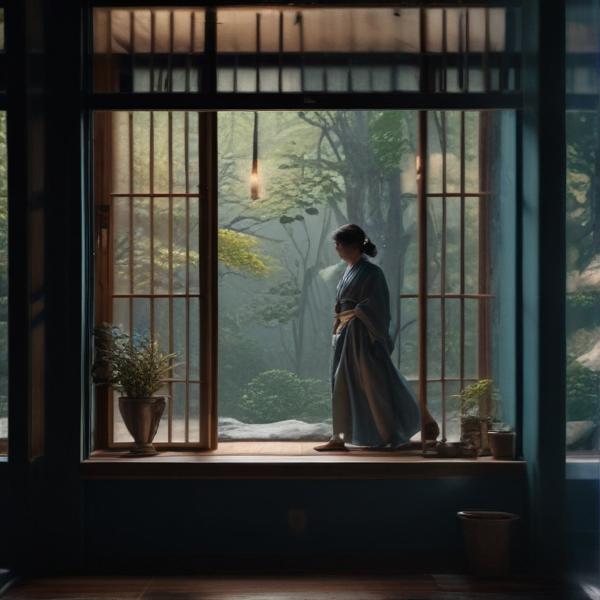基本信息 (Basic Information)
含义与用法 (Meanings & Usage)
中文核心释义 (Core Chinese Meaning): 蓝绿色,青色,也指年轻、未成熟。
英文核心释义 (Core English Meaning): blue-green, cyan, also means youth or something not yet mature.
象形意义 / 为何这么写 (Pictographic Meaning / Writing Rationale)
文言文释义 (Classical Chinese Meaning)
深入学习 (In-depth Study)
字源故事 (Origin Story)
字形演变 (Character Evolution)
常用词语和例句 (Common Words & Examples)
青春 (youth)
青春是一生中最美好的时光。
Eng: Youth is the most beautiful time in one’s life.
青山 (green hills; verdant mountains)
远处的青山在阳光下显得格外美丽。
Eng: The verdant mountains in the distance look especially beautiful under the sunlight.
青年 (young people; youth)
青年应该勇敢追求自己的梦想。
Eng: Young people should bravely pursue their dreams.
相关成语 (Related Idioms)
青出于蓝
Meaning: 'Indigo blue is extracted from the indigo plant, but is bluer than the plant itself.' (The student surpasses the master)
多语言翻译 (核心释义) (Translations (Core Meaning))
- French: bleu-vert, cyan, jeunesse
- German: blau-grün, Cyan, Jugend
- Spanish: azul verdoso, cian, juventud
- Italian: blu-verde, ciano, gioventù
- Portuguese: azul-esverdeado, ciano, juventude
- Russian: сине-зелёный, циан, молодость
- Arabic: أخضر مزرق، سماوي، شباب
- Persian: آبیسبز، فیروزهای، جوانی
- Dutch: blauwgroen, cyaan, jeugd
- Polish: niebiesko-zielony, cyjan, młodość
- Vietnamese: xanh lam lục, thanh xuân
- Ukrainian: синьо-зелений, ціан, молодість
视频学习资源 (Video Learning Resources)
通过以下链接在热门视频网站搜索 "青" 的更多讲解:
Search for more explanations of "青" on popular video sites:
- 在 Bilibili.com 搜索 "青 字源 说文解字" (Search on Bilibili)
- 在 YouTube.com 搜索 "青 character origin etymology" (Search on YouTube)
网络参考 (Web References for "青") ()
网络内容摘要 (Web Content Summary):
核心含义与起源:“青”本义是一种颜色,通常指介于蓝色和绿色之间的颜色。在古代,“青”常用来形容植物的颜色,也可指一种矿物颜料,相关例子如“丹青”指绘画(因画画常用青色矿物颜料)。 Core Meaning & Origin: The character "青" primarily refers to a color, usually between blue and green. In ancient times, it also described the color of plants or referred to a mineral pigment (as in "丹青" meaning painting, from the pigment used).
文化与象征:在中国传统文化中,“青”还常用作东方和春天的象征。例如,东方被称为“青”,春天也用“青”来代指。 Cultural Symbolism: In traditional Chinese culture, "青" symbolizes the east and spring. For example, the east is often called "青," and spring may also be referred to as "青."
- 易混淆点:现代汉语中,“青”有时与“蓝”和“绿”混用,需结合语境判断具体色彩。 Easy Confusion: In modern Chinese, "青" can sometimes be used interchangeably with "blue" (蓝) and "green" (绿), depending on context.
- 常用词语:如“青铜”(bronze)、“青山”(green hills)、“青春”(youth)、“丹青”(painting/art)。 Common Phrases: Examples include "青铜" (bronze), "青山" (green hills), "青春" (youth), and "丹青" (painting/art).
成语典故:部分词语如“青鞋布袜”(比喻简朴生活)展现古人生活方式,“青宫”指太子居住的宫殿,也因中国传统中东方属青色。 Idioms & Allusions: Some phrases, such as "青鞋布袜" (symbolizing a simple lifestyle), and "青宫" (the prince’s palace, associated with the east and the color "青"), reflect cultural background.
信息总结:“青”不仅是颜色字,蕴含丰富文化和象征意义,有时需注意与现代色彩词的区分。 Summary: "青" is not only a color word but also carries deep cultural meanings and symbolism. Its exact shade may differ from modern "blue" or "green," so context is important.
汉字"青"的起源、演变过程-汉字字源辞典
汉字字源辞典收录7747条汉字词条,基本涵盖了常见汉字的字源解析,是汉字研究的必备工具。 ... 用红绿色矿物颜料作画,用的久了,人们便用丹青借指绘画。青,最初应该就是指一种矿物原料,而且类似小草的颜色。 ...
青的解释|青的意思|汉典"青"字的基本解释 - 漢典
俗称"酒旗");青绫步障(用青绫做的屏障);青鞋布袜(青布做的鞋袜,为山野中人所服。比喻简朴的生活) (2) 东方的代称 [the east] 东方谓之青。—— 《考工记·画绘之事》 又如:青宫(太子居东宫,东方色为青,所以称东宫为青宫);青土(指东方之地) (3) 春的代称 [spring]
更多图片 (青 More Images) ()
